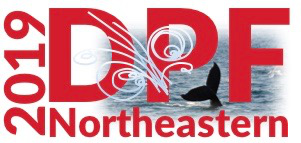Speaker
Description
The Higgs boson is an integral piece of the Standard Model and knowing its properties helps to establish limits on and to lower the uncertainties of other parameters in a wide variety of analyses. This presentation will summarize the methods used to make the world's most accurate Higgs mass measurement which currently stands at: $m_{H} = 125.26 \pm 0.21$ GeV. This analysis studies the $H \rightarrow ZZ \rightarrow 4\ell$ channel (where $\ell = e, \mu$) using 2016 data collected by the CMS experiment ($35.9\ fb^{-1}$) at $\sqrt{s} = 13$ TeV. A 3-dimensional likelihood fit is performed, which uses: (1) the four-lepton invariant mass, (2) event-by-event four-lepton mass uncertainty, and (3) a matrix element-based kinematic discriminant. In addition, a kinematic constraint on an invariant mass of two leptons coming from the mostly on-shell Z boson is used to improve measurements of their momenta and, hence, a measurement of the Higgs boson mass on an event-by-event basis.
